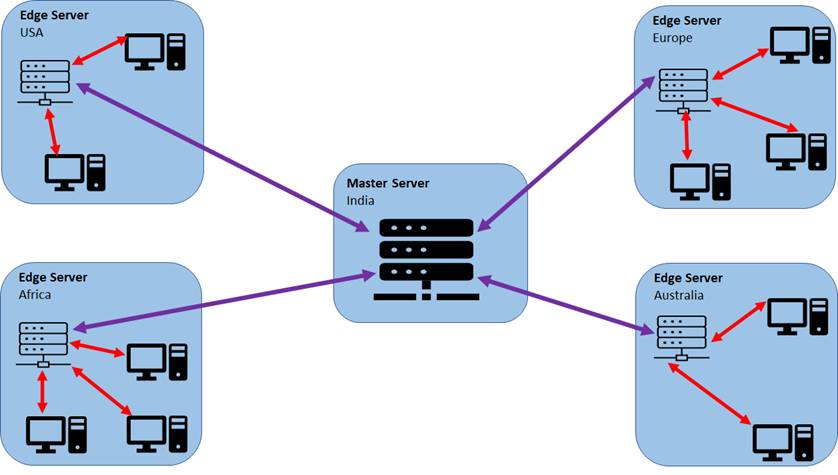What is a Content Delivery Network (CDN)?
Definition: CDN is an azure service that reduces the load time of the content, saves the bandwidth, and increases application responsiveness.
An Azure CDN, lets you cache your content that changes too often.
- Most of the time, Content Delivery Network is referred to as CDN.
- CDN works on the pay-as-you-go model.
- CDN can be used if you are running a website, online application, streaming media site, online games, firmware updates, IoT endpoints, etc.…
How does CDN work?
Refer to the diagram below, while reading the explanation.

- Imagine you have a video streaming website that is hosted in India (Master Server) and you have the users of the application spread across the world.
- Now, a user from Australia or US will face some latency issues compared to users in India because the data needs to “travel more” to reach them.
- Azure CDN comes to the rescue here.
- Azure CDN stores copies of the master data in the servers which are nearer to the end-users (In Australia, US, UK, etc.).
- These servers are called Edge Servers or Edge Nodes, these servers hold the cached data.
- When the cached data expires in Edge Nodes, it asks for a fresh copy of data from the Master database.
- That is how CDN works and provides faster content delivery to the end-users.
Advantages of using CDN
- Your application performs better in terms of responsiveness and user experience.
- CDN is available globally so no matter in which corner of the earth you are, you are covered (almost).
- CDN is integrated with Azure services, so you can scale up and down as and when needed.